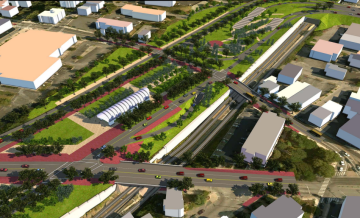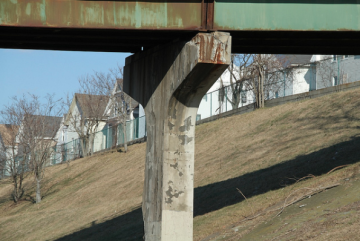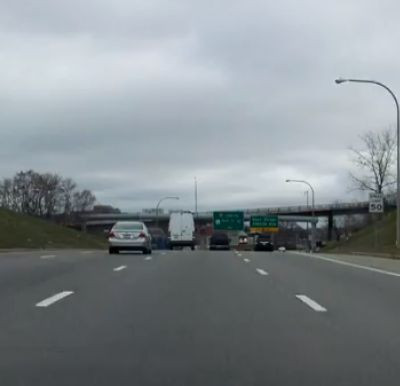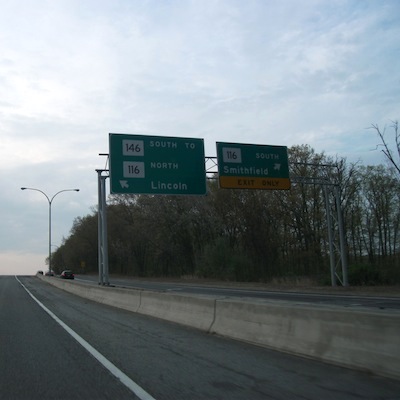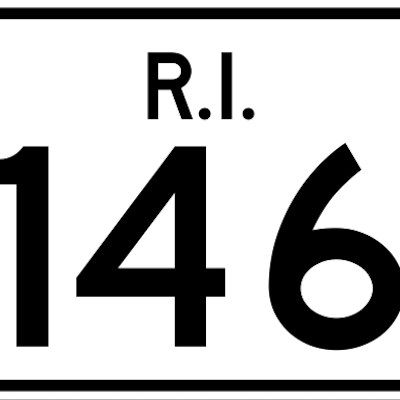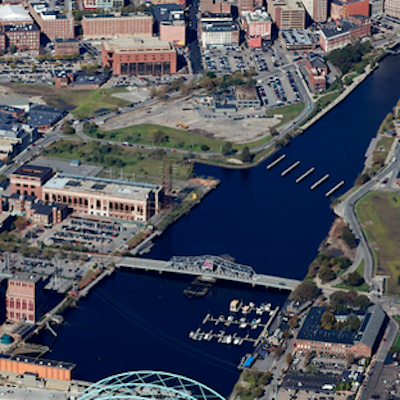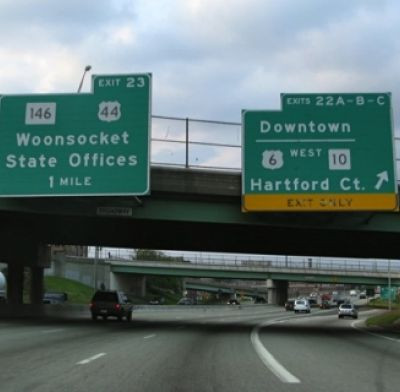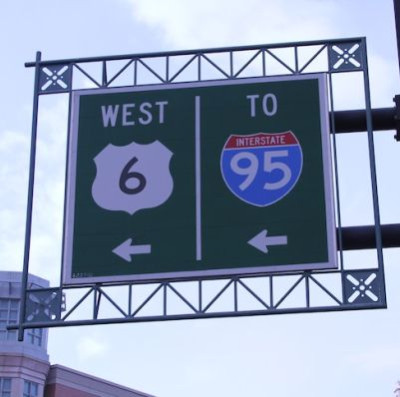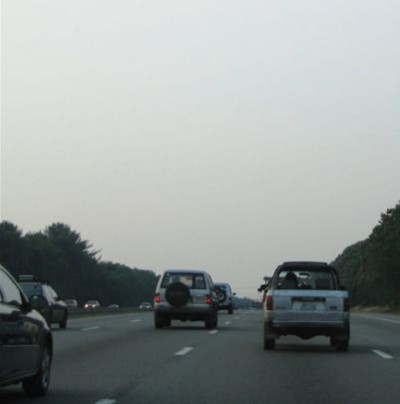New Group Emerges in Battle Over Future of 6-10 Connector
Tuesday, August 16, 2016
A newly formed group has emerged to advocate for a "cost-effective" 6-10 connector redesign - just weeks after the State of Rhode Island was rejected in its bid for a $175 million grant from the federal government.
The coalition called "Fix The 6-10" is comprised of a dozen organizations (see below) that are calling for a rebuild of the crumbling state highway infrastructure on the Providence line in a way that "benefits all of Rhode Island." They state:
Recent estimates by the Rhode Island Department of Transportation (RIDOT) have placed the cost of an expensive, heavily-engineered hybrid tunnel-highway at $595 million dollars making it one of the most expensive highway interchanges in the world. Compounding concerns on how taxpayers can pay for this huge project, the state recently learned that it will not be receiving a hoped-for $175M from the Federal Government to pay for the project.
GET THE LATEST BREAKING NEWS HERE -- SIGN UP FOR GOLOCAL FREE DAILY EBLASTThe group is pushing for a "surface option" for the redesign, as opposed to new tunnels and bridges which the group claims will "saddle future generations with huge ongoing maintenance costs."
"The "surface option" would create a network of roads which are more affordable, improve traffic flow, create new tax revenue, and strengthen the long neglected neighborhoods of Olneyville and the Westside," stated the group at their launch.
RIDOT Committed to Existing Plan
On Monday, RIDOT said that it is looking to the 6-10 overhaul that has been planned for decades — but that it is also listening to options. RIDOT, however, did not provide a time frame for next steps, now that the federal funding was not realized this year.
“While we are disappointed that we did not receive the FASTLANE grant funding for the Route 6-10 Interchange project, we remain committed to moving this long-delayed project forward,” said RIDOT Director Alviti. “Seven of the interchange’s nine bridges are structurally deficient and must be replaced. We cannot continue to postpone this work. Thanks to the passage of Rhodeworks, Rhode Island has $400 million in committed state and federal funding to draw from to address the Route 6-10 interchange. RIDOT will move quickly to evaluate our options to tackle this problem and present a recommendation for next steps. But, let me assure you we will not roll the dice with Rhode Islanders’ safety. RhodeWorks provides us the basic resources to finally tackle the problem of getting these bridges back into a state of good repair and providing safe conditions for the 100,000 people who use this Connector daily.”
“RIDOT is evaluating our options to tackle this problem and present a recommendation for next steps,” said Alviti. “The Route 6-10 Interchange Project has road and bridge elements that have been in design for approximately 30 years, and work is long overdue. This year, RIDOT will spend over $6 million to keep 6/10 safe for the traveling public.”
Group Pushing for Surface Option
Currently, the "Fix The 6-10" coalition is comprised of the Providence Preservation Society, Grow Smart RI, West Broadway Neighborhood Association, RI Bicycle Coalition, The Armory Revival Company, CNU New England, Sierra Club, The Nature Conservancy, Groundwork Providence, Bike Newport, Recycle-A-Bike, and DOT Watch.
Calling for "social justice, fiscal responsibility, and social and environmental justice" the group is doubling down on efforts after the DOT held a number of listening sessions across the state in Apri, prior to the unsuccessful federal grant application.
"Rebuilding a highway in the 6/10 corridor, especially if it involves a cap, will cost at least $600 million, hundreds of millions more than a surface alternative. A surface option will cost taxpayers much less, making resources available for other projects throughout the state. Further, the ongoing maintenance costs of the highway option will burden our children with billions of dollars of maintenance and replacement costs. A surface road option will also unlock dozens of taxable acres for development, improving the region's fiscal health," it stated.
On Monday, Providence City Council President Luis Aponte spoke to the state missing out on the grant — and the opportunities he sees moving forward.
Providence -- and Statewide -- Roles
“The [federal grant application] was ‘hurry up and wait’ — now that we know we didn’t get that money, we need to reconvene the conversation and talk about what the guiding principles are, and that need to be in the forefront of that discussion,” said Aponte. “Those principles need guide the development of this corridor in way that meets goals of city, that it provides for additional development opportunities, and that it's urban scale and scope -- and that it meets the balance between statewide transportation needs and local development. I'd support something that meet those criteria."
"I think the city has a role to advocate for a way that enhances the developablity and gives us opportunity to max those investments for the betterment of the city -- it's a balance," said Aponte. "6 and 10 are part of our statewide highway infrastructure but that can either divide communities or better communities and the quality of life -- it's our role to enhance the latter."
Brian Bishop, who is on the board of taxpayer advocacy group OSTPA, who has been an outspoken critic of the process — and even put forth his own proposal for a “no bridge” alternative to alleviate costs — said that any other plan would need buy-in from communities around the state.
“Providence has to co-opt some other municipal support if there's a Plan B. It can't be Providence against the rest of the state,” said Bishop. “Don't forget, other municipalities have priorities -- other towns need to realize they won't get what they need if the state spends $1 billion on this.”
Related Slideshow: RI’s Most Dangerous Bridges
The American Road and Transportation Builders Association recently released a list of the most traveled, deficient bridges in each state. In Rhode Island, those bridges were:
Related Articles
- Is DOT’s Alviti the Most Accessible in RI Government Right Now?
- Moore: Fix the 6-10 Connector For Freedom’s Sake
- 80% of Raimondo’s Toll Plan Would Go to Routes 6 and 10
- RIDOT Names 10 New Senior Management Team Members
- NEW: Lewis to Step Down, Raimondo Announces New RIDOT Chief
- RIDOT Releases Time-Lapse Video Documenting Bridge Replacement at Barton Corner
- RIDOT’s Alviti Says “Let Me Tell You Something Pal” to Constituent at Public Meeting
- Raimondo, RIDOT Kick Off Amtrak High Speed Rail Work at Kingston Station
- NEW: RIDOT Forced to Clean up Pollution and Clean Water Act Violations
- RI DOT Defends Release of 19th Century Maps, Says Part of 1,500 Pages Provided
- RIDOT Construction Season Begins
- Lewis in Limbo: DOT Chief Awaits Confirmation
- NEW: RIDOT Engineer on Highway Traffic Safety Committee
- NEW: Tassoni Praises DOT on Bridge Project
- NEW: DOT Announces Bridge Closure


